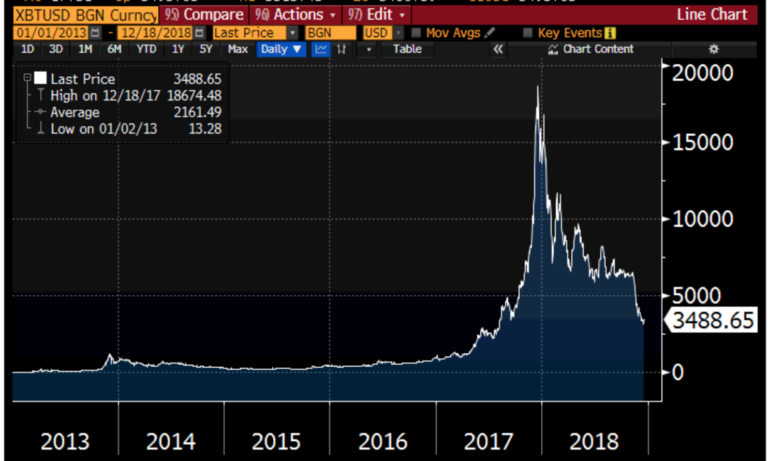Herd behavior. An experiment conducted at the University of Leeds showed that it takes a minority of just five per cent to influence a crowd’s direction – and that the other 95 per cent follow without even realizing it. The scientists concluded that “The findings could have major implications for directing the flow of large crowds, in particular in disaster scenarios”.
Given the “disastrous” performance of crypto currencies between 2017 and 2018, I feel that these scientists have already been proven right. As an example, the price of Bitcoin rose by nearly 50x through 2016 and 2017 but then steadily plunged throughout 2018, down more than 80% by late December.

What these Leeds scientists did was to tell hundreds of people to walk around completely at random in a large hall. But they secretly gave a small number of people information about a pattern to follow. Once the tiny “informed minority” started exhibiting the pattern, the hundreds of others quickly started doing the same, without even realizing it. It is worth pointing out that in this case, the so-called “informed minority” was just a small group of people who themselves had simple been told what to do.
Sheep in human clothing – scientists reveal our flock mentality (Society & Politics, February 2008)
For investors, herd mentality is often a case of FOMO (“Fear of missing out”). And the more people that join the herd, the stronger the FOMO gets. It becomes self-perpetuating. By Thanksgiving 2017, it seemed that “everyone” was getting rich by buying crypto currencies. This drew more and more people into the herd, which pushed up prices, which drew even more people into the herd. This is the same story we see under most asset bubbles. However, timing the end and even identifying a bubble at all is generally not possible until well after the fact.
What you can learn from some of the biggest bubbles in history (m1finance.com)
For research analysts, herd behavior is opposite to that of investors. Rather than displaying greedy FOMO, the analysts herd together just to get safety in numbers. When five analysts have no idea how to value a company, if they all use similar values, presumably none of them will be overly punished by their employer if their forecasts turn out to be significantly wrong. This is because “everyone else thought the same thing too”. This can be frequently seen when multiple analysts make it a point to all change their targets in close proximity to one another, putting out price targets that are all within a few dollars of one another plus/minus. When any process is conducted in this arbitrary way, the conclusions will (of course) be inherently very unreliable for each of those individuals. And then the fact that an unreliable conclusion is then repeated across multiple analysts ends up giving investors significant confidence where, in fact, they should likely have very little.
“Asymmetric aggregation of animals under panic conditions has been observed in many species, including humans, mice, and ants”. Panic-induced symmetry breaking in escaping ants


